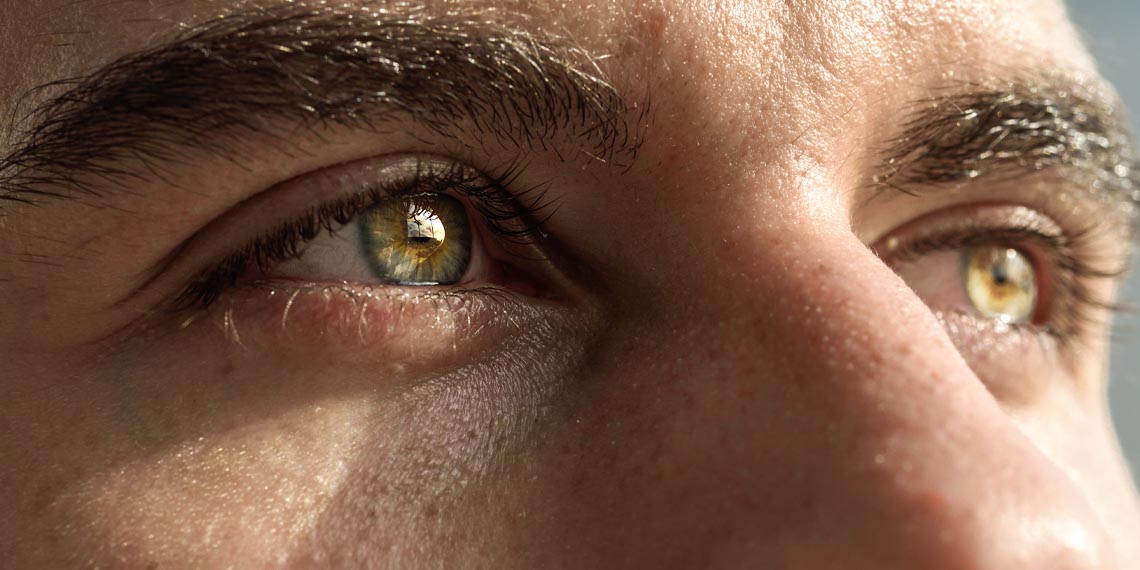New research provides evidence that a pattern glare test can be used successfully to detect subclinical autism and schizotypy traits. Participants with high levels of schizotypy tended to report more pattern glare illusions. The study was published in Cognitive Neuropsychiatry.
Schizotypy is a spectrum of personality traits that represents a subclinical, or milder, form of the cognitive and perceptual features observed in schizophrenia. In other words, while some individuals display only mild schizotypal characteristics, others exhibit more pronounced symptoms. Individuals with high levels of schizotypy are prone to cognitive disorganization, magical thinking, paranoia, and social withdrawal—features that resemble those seen in schizophrenia. However, unlike schizophrenia, schizotypy does not necessarily involve psychosis (a complete break from reality) or significant impairment in daily functioning. Because schizotypy is a risk factor for developing schizophrenia, scientists study it in hopes of detecting the onset of schizophrenia early, thereby allowing for timely treatment and potentially better outcomes.
Study author Wendy A. Torrens and her colleagues noted that behavioral hyperexcitability (i.e., strong reactions to stimuli) might be used to detect subclinical levels of autism and schizotypy, or even to differentiate between the two. Although these patterns of psychological characteristics often co-occur, they represent risks for different mental health disorders.
To investigate these characteristics, the researchers used the phenomenon of “pattern glare” illusions. Pattern glare illusions are visual distortions and sensations of discomfort that occur when viewing high-contrast striped patterns, such as black-and-white gratings. These illusions can include blurring, flickering, movement, color changes, shimmering, or distortion of the lines, even though the pattern itself remains static. They are caused by hyperexcitability in the visual cortex, where certain spatial frequencies trigger excessive neural responses. Pattern glare illusions are commonly reported in individuals with migraine, visual stress, epilepsy, and some neurodevelopmental conditions, such as dyslexia. These illusions are assessed using the Pattern Glare Test, which involves viewing a series of black-and-white striped gratings that vary in stripe spacing. Individuals with behavioral hyperexcitability typically report visual distortions (e.g., movement, blurring, flickering) or physical discomfort (e.g., eye strain, headaches) when viewing the images in this test.
The study involved 576 students from undergraduate psychology classes at the University of Nevada, Reno; 404 of the participants were women, and the average age was between 19 and 20 years. Participants completed assessments of schizotypy (using the Schizotypal Personality Questionnaire – Brief Revised), autistic traits (using the Autism-Spectrum Quotient), and the Pattern Glare Test.
The results indicated that autistic traits and schizotypy are highly correlated—in other words, participants with high levels of schizotypy tended to have higher levels of autistic traits, and vice versa. However, only individuals with high levels of schizotypy tended to report more pattern glare illusions on the Pattern Glare Test. The level of autistic traits, on the other hand, was not associated with the number of pattern glare illusions reported.
“High schizotypy performed the PGT [Pattern Glare Test] in a manner consistent with behavioral hyperexcitability. The PGT distinguished subclinical autistic traits from schizotypy, suggesting potential clinical application,” the study authors concluded.
This study sheds light on the psychological correlates of schizotypy. However, because it was conducted exclusively on undergraduate students, the results might differ in other demographic groups.
The paper, “Pattern glare sensitivity distinguishes subclinical autism and schizotypy,” was authored by Wendy A. Torrens, Jenna N. Pablo, Marian E. Berryhill, and Sarah M. Haigh.




